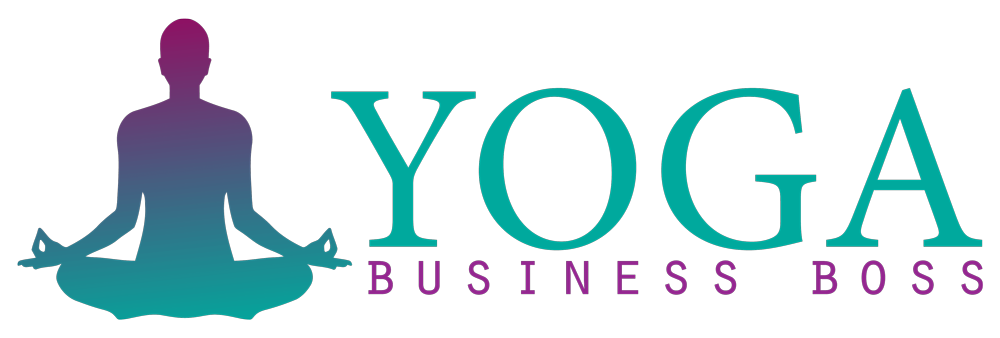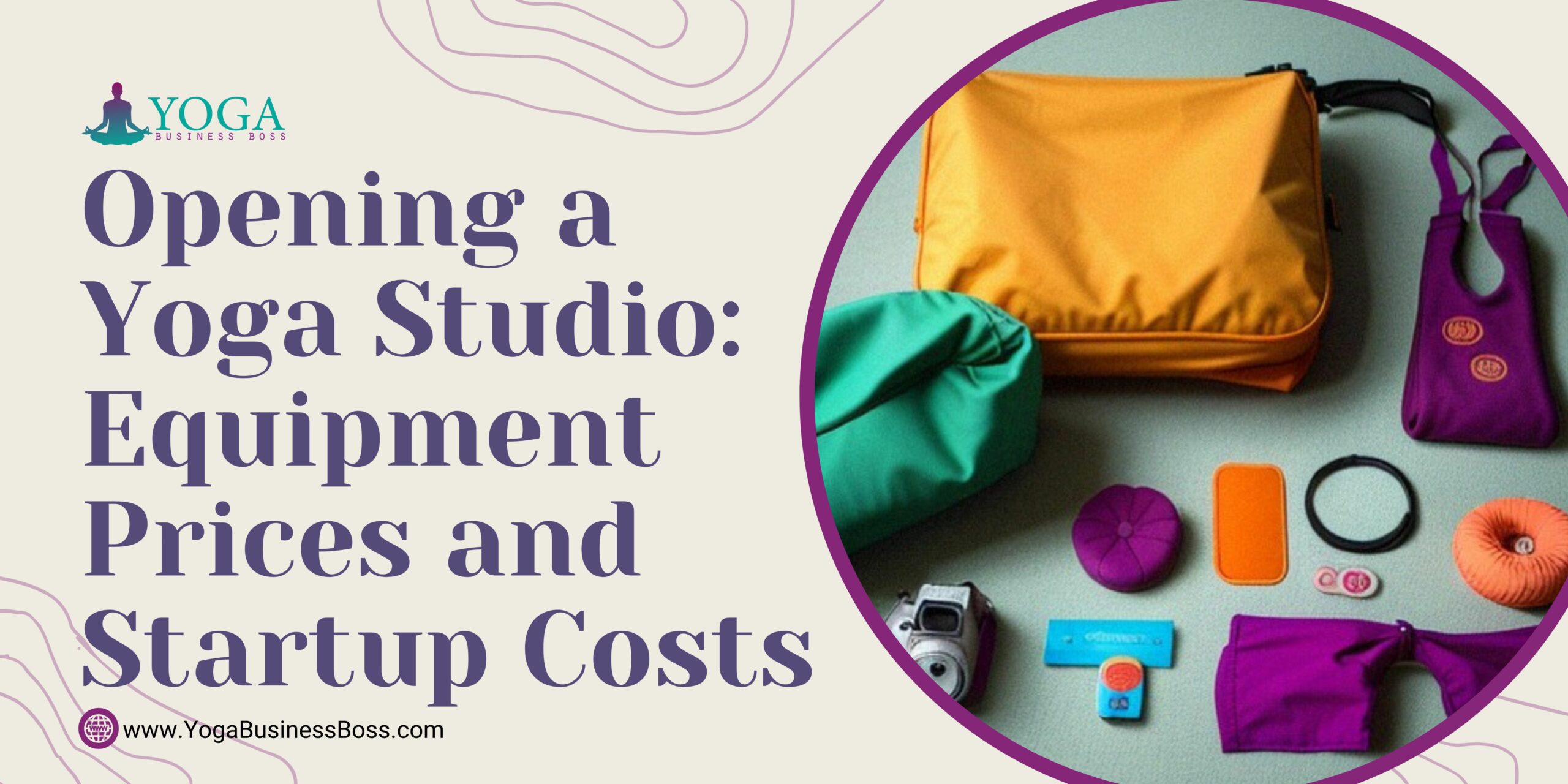When it comes to pursuing your dream of opening a yoga studio, the path to progress is paved with both passion and practicality. While your love for yoga and the desire to create a welcoming space for your community are undoubtedly crucial, you must also grapple with the financial aspects of starting a yoga studio.
Opening a yoga studio: Equipment prices & startup costs vary widely. While the average is around $70,000 for a 1000 sq ft space, factors like location, renovations, and amenities can push expenses up or down. Planning, negotiation, and careful budgeting are key to achieving your goals.
Understanding the Varied Costs
The process of opening a yoga studio is akin to practicing a complex yoga pose, with each component contributing to the overall harmony of the endeavor. Before we delve into the specifics of startup costs, it’s crucial to grasp the intricate interplay of factors that can cause expenses to fluctuate dramatically.
Location Matters

The age-old adage in real estate, “Location, location, location,” holds immense significance in the context of launching a yoga studio. The cost of establishing a studio in a bustling urban area, replete with high rent prices and competition, will differ markedly from that of opening one in a quieter suburban or rural locale.
Urban locations often demand a more substantial financial commitment due to elevated rent prices, but they can also offer a broader client base. In contrast, suburban or rural areas generally offer more cost-effective leasing options but may require more diligent marketing efforts to attract clientele.
Furthermore, the location you choose influences the type of yoga enthusiasts you’re likely to draw. Urban studios might cater to a diverse, cosmopolitan crowd seeking convenience and variety, while suburban or rural studios may attract individuals seeking a more relaxed, community-oriented yoga experience.
Size and Amenities
Another critical aspect that influences startup costs is the size of the studio and the amenities you plan to offer. A spacious 1000 sq ft studio with changing rooms, showers, and a lounge area will require a more substantial initial investment than a smaller, more modest space.
Now, let’s break down the primary expenses you’ll encounter when opening your yoga studio:
Renovation Costs
Renovation costs are a pivotal aspect of opening a yoga studio, with an average range of $20,000 to $50,000. However, this figure can be highly variable. The extent of your renovation expenses hinges largely on the condition of the space you lease.
If you are fortunate to find a location that requires minimal changes to align with your vision, you’ll likely find yourself on the lower end of the cost spectrum. This may involve minor cosmetic improvements such as painting, flooring, or lighting adjustments.
Conversely, if your chosen space necessitates substantial modifications or structural improvements, expenses can escalate rapidly. These could involve major structural changes, plumbing and electrical work, or the creation of specialized yoga spaces. In such cases, it’s crucial to allocate a significant portion of your budget to renovations, and potentially engage with architects or contractors to ensure compliance with building codes and safety standards.
Careful assessment of the space and transparent communication with contractors is key to managing renovation costs effectively. Budgeting for unforeseen issues and factoring in the possibility of delays is also prudent in this phase of your yoga studio’s development.
Lease and Rent
Lease and rent expenses are among the most significant financial considerations when opening a yoga studio. The average cost varies widely based on location, but a rough estimate falls within the range of $1,500 to $10,000 per month.
Location plays a pivotal role in determining these expenses. Urban areas typically command higher rent prices due to greater demand, visibility, and foot traffic. In contrast, suburban or rural locations tend to offer more affordable leasing options.
Lease negotiation is a crucial aspect of your financial planning. Engaging in effective negotiations with landlords can yield favorable terms, potentially lowering your monthly rent or securing leasehold improvements to offset renovation costs. Understanding the lease agreement’s stipulations, such as rent escalation clauses and maintenance responsibilities, is essential to avoid unexpected financial burdens down the road.
It’s advisable to engage legal and real estate professionals to review lease agreements, ensuring that you fully understand the terms and can make informed decisions regarding your studio’s location.
Equipment and Supplies
The cost of yoga equipment and supplies is an essential consideration for your yoga studio, with an average range of approximately $5,000 to $10,000. The variability in costs primarily hinges on the extent of equipment you intend to provide and the quality of the items chosen.
Essential yoga equipment includes yoga mats, blocks, straps, blankets, and bolsters. The quantity and quality of these items can affect your budget significantly. Investing in durable, high-quality equipment is advisable for long-term sustainability, as it can reduce the need for frequent replacements.
The number of props you choose to offer also influences expenses. Some studios provide a basic set of equipment, while others may opt for a more extensive range of props to accommodate various yoga styles and levels of practice. Carefully assess the needs and preferences of your target audience to determine the right balance.
When budgeting for equipment and supplies, consider the longevity of each item, and its maintenance requirements, and factor in potential replacements over time. Bargain shopping and bulk purchases can also help optimize your expenses without compromising on quality.
Marketing and Advertising

Marketing and advertising expenses are essential for attracting and retaining clients. The average cost falls within the range of $1,000 to $5,000, but these costs can be highly variable depending on your promotional strategies and objectives.
Your marketing efforts may encompass various channels, such as website development, social media advertising, printed materials like flyers and brochures, and establishing partnerships with local businesses to cross-promote services or offers. The specific tactics you employ will dictate your marketing budget.
Website development can be a substantial expense, especially if you opt for professional web design and hosting services. However, a user-friendly, visually appealing website is a critical tool for online visibility and client engagement. Social media advertising, if executed effectively, can be cost-efficient and highly targeted.
Flexibility in your marketing strategy is vital, allowing you to adapt to changing trends and client preferences. Monitoring the return on investment (ROI) for various marketing channels is essential to allocate resources effectively and maximize your studio’s exposure within your budget constraints.
Legal and Administrative Expenses
Legal and administrative expenses are a necessary part of opening a yoga studio, with an average cost ranging from $2,000 to $5,000. These costs cover various aspects of business establishment and management and can be influenced by the complexity of your specific circumstances.
Legal fees encompass tasks such as business registration, obtaining necessary permits, and drafting contracts with instructors, employees, and vendors. The legal requirements for opening a yoga studio can vary by location and business structure, so consulting with an attorney who specializes in business law is often advisable.
Permitting requirements may include zoning approvals, health department permits, and licenses for special activities or events held at your studio. The cost of permits and licenses can vary significantly depending on your location and the nature of your yoga offerings.
You may need to invest in administrative tools or software to manage client records, bookings, and finances efficiently. This can include accounting software, scheduling apps, and client management systems, which contribute to the overall administrative expenses.
Keep in mind that legal and administrative expenses are essential investments to ensure that your yoga studio operates within the bounds of the law, adheres to regulations, and protects your interests as a business owner. Consulting with professionals in these areas can provide valuable guidance and prevent legal complications down the road.
Initial Staffing
Initiating the staffing aspect of your yoga studio typically incurs an average cost ranging from $2,000 to $5,000. However, this figure is contingent upon a variety of factors. As you embark on your studio’s journey, you’ll need to recruit and onboard key personnel, including instructors, front desk staff, and cleaners.
Hiring qualified and experienced yoga instructors is essential to provide high-quality classes and build your studio’s reputation. Costs may encompass posting job listings, conducting interviews, and potentially offering training or orientation programs for new instructors.
Front desk staff play a pivotal role in creating a welcoming atmosphere, managing bookings, and assisting clients. Their initial costs may include training, uniforms, and software or tools required for efficient studio operation.
Cleaners ensure that your studio maintains a clean and sanitary environment, a paramount concern for yoga practitioners. Initial costs may include cleaning supplies and equipment, along with training on specific cleaning protocols.
While these initial staffing costs are crucial for setting up your studio, remember that ongoing payroll and compensation expenses will continue as part of your monthly overhead. Staffing decisions should align with your business plan and studio size, ensuring you have the right team to support your vision.
Insurance
Insurance is a vital component of protecting your yoga studio, with an average annual cost ranging from $2,000 to $5,000. This cost can fluctuate based on several factors, including your studio’s location and the extent of coverage you choose.
Yoga studio insurance typically covers liability, property damage, and injury claims. Liability insurance is especially critical in case a student sustains an injury during a class or someone files a lawsuit against your studio. Property insurance protects your studio’s physical assets, including equipment, fixtures, and furnishings.
The specific cost of insurance may depend on your location, as areas with higher rates of litigation or natural disaster risks can result in higher premiums. Additionally, the amount of coverage you select and any additional riders or endorsements will influence the overall cost.
It’s essential to work with an insurance professional who understands the unique needs of yoga studios to ensure that you have adequate coverage to protect your business and assets.
Utilities and Ongoing Expenses
Ongoing expenses, such as utilities, are an essential consideration when operating a yoga studio. On average, you can anticipate monthly costs ranging from $500 to $1,000 for utilities like electricity, water, and heating. However, these expenses are subject to variability based on factors like usage and location.
The actual utility bills for your studio can fluctuate with factors such as the size of the space, the number of classes held, and the energy efficiency of your facilities. Implementing energy-efficient lighting, heating, and cooling systems can help control these ongoing costs over time.
Monitoring utility usage and exploring ways to reduce consumption, such as turning off lights when not in use or using programmable thermostats, can contribute to cost savings. Accurate budgeting and regular assessment of utility expenses are essential to maintaining your studio’s financial health.
Miscellaneous Expenses
Miscellaneous expenses are often overlooked but can be significant, with an average cost ranging from $2,000 to $5,000. This category encompasses unforeseen costs and additional amenities that enhance the overall studio experience.
Unforeseen expenses may include unexpected repairs, maintenance, or replacements of equipment or facilities. It’s wise to allocate a portion of your budget to account for these surprises, ensuring that they don’t disrupt your operations or finances.
Additional amenities can vary widely and may include items like a water dispenser, reception desk, artwork, or other features that enhance the ambiance and functionality of your studio. These investments contribute to creating a welcoming and enjoyable environment for your clients.
To manage miscellaneous expenses effectively, consider setting aside a contingency fund or reserve to address unexpected costs while maintaining the overall financial stability of your yoga studio.
Contingency Fund
A contingency fund is a prudent financial strategy for the stability of your yoga studio, typically amounting to approximately 10% of your total budget. While this isn’t a direct expense, it is a critical financial cushion to mitigate unexpected costs and maintain business continuity during the initial stages.
The variability of a contingency fund lies in its adaptability to unforeseen circumstances. Whether you encounter equipment breakdowns, emergency repairs, or unexpected drops in revenue, having this financial buffer ensures that your studio remains operational.
A contingency fund provides peace of mind and allows you to make strategic decisions without the pressure of immediate financial crises. As your studio grows and becomes more financially stable, you can revisit and adjust the size of your contingency fund as needed.
These financial considerations underscore the importance of comprehensive planning and prudent budgeting when opening and operating a yoga studio. Understanding the initial costs, ongoing expenses, and the need for financial safeguards is crucial for a great and sustainable venture.
Tips for Cost Management and Sustainability
Opening a yoga studio can be financially demanding, but with thoughtful planning, it’s entirely feasible to keep costs in check while maintaining a welcoming and functional space. Here are some tips to help you manage costs and ensure the sustainability of your studio:
Create a Detailed Business Plan
A well-structured business plan is the cornerstone of financial progress when opening a yoga studio. It serves as a comprehensive roadmap that not only outlines your vision but also delves into the nitty-gritty of financial projections, anticipated income, and expenses.
By meticulously plotting your financial course, a business plan helps you make informed decisions, secure funding, and navigate potential challenges. It’s your compass, guiding you through the intricacies of entrepreneurship, and providing clarity and direction on your path to achieving your yoga studio dream.
Research and Negotiate Lease Terms
Choosing the right location for your yoga studio and negotiating favorable lease terms can have a profound impact on your studio’s financial health. Careful consideration of factors such as rent prices, lease duration, and possible leasehold improvements can significantly affect your bottom line.
Negotiating with landlords for concessions like rent reductions or tenant improvement allowances can free up capital for other essential investments. Location and lease terms are strategic financial decisions that require thorough research and negotiation skills to optimize your studio’s financial stability.
Start Small and Expand Gradually
Starting small and expanding incrementally is a prudent approach to managing upfront expenses when opening a yoga studio. Begin with the essentials, including necessary equipment and basic amenities. As your clientele grows and your revenue increases, you can gradually invest in additional features, equipment, and offerings.
This gradual expansion minimizes the initial financial burden, allowing you to adapt to your community’s specific needs and preferences. It’s a sustainable strategy that ensures your studio’s growth aligns with your financial capacity and market demand.
Seek Financing Options

Securing the necessary capital to fund your yoga studio may involve exploring various financing options. Small business loans, grants, and partnerships can provide the financial backing you need to bring your vision to life.
Financial institutions and local economic development agencies may offer support to small businesses, particularly those with a strong business plan and a clear path to progress. By diligently researching and pursuing these financing opportunities, you can obtain the resources required to launch and sustain your yoga studio while managing initial costs effectively.
Explore the profits and losses involved in having a yoga studio business.
Embrace Sustainability
Incorporating sustainability practices into your yoga studio’s design and operations can yield long-term financial benefits. Energy-efficient lighting, heating, and cooling systems not only reduce utility costs but also align with the eco-conscious values of many yoga communities.
Sustainable choices extend beyond environmental considerations; they can enhance your studio’s reputation, attract environmentally aware clientele, and contribute to cost savings over time. By embracing sustainability, you not only support the planet but also nurture your studio’s financial sustainability in the long run.
Careful Staffing Decisions
Mindful staffing decisions are essential to managing labor costs effectively. In the early stages of your yoga studio, consider part-time or freelance instructors to match your initial capacity and budget. As your studio grows and class offerings expand, you can strategically expand your team to meet demand. This approach ensures that staffing costs align with revenue generation, allowing you to scale your staff to match the growth of your business without overextending your finances.
Regularly Review and Adjust Your Budget
Financial flexibility is key to adapting to changing circumstances as a yoga studio owner. Regularly reviewing and adjusting your budget enables you to monitor financial performance, identify areas for improvement, and respond to unexpected challenges.
By maintaining a dynamic budget, you can make informed decisions, allocate resources effectively, and ensure the ongoing financial health of your yoga studio. This proactive approach to financial management empowers you to navigate the evolving landscape of business ownership with confidence and agility.
Summary
Opening a yoga studio can be both a fulfilling and financially satisfying venture. While the initial costs may seem daunting, careful planning and prudent financial management can help you navigate the growth path. By understanding the varied expenses involved, negotiating favorable lease terms, and making thoughtful equipment and staffing decisions, you can create a welcoming yoga studio that aligns with your passion and resonates with your community.
Remember that the journey may have its financial challenges, but with dedication and a well-thought-out plan, your yoga studio can thrive as a cherished community space.
Frequently Asked Questions
Should I create a contingency fund?
Yes, it’s advisable to allocate about 10% of your total budget as a contingency fund to handle unexpected expenses.
Can I start with a small studio and expand later?
Yes, starting with a basic setup and expanding as your clientele grows is a practical approach to managing costs.
How can I secure financing for my yoga studio?
Explore options like small business loans, grants, or partnerships. Financial institutions and local economic development agencies may offer assistance to small businesses.
To learn more on how to start your own yoga business check out my startup documents here.
Disclaimer: The information provided by YogaBusinessBoss.com (“The Site”) is for general informational purposes only. All information on the Site is provided in good faith, however, we make no representation or warranty of any kind, express or implied, regarding the accuracy, adequacy, validity, reliability, availability, or completeness of any information on the Site. Under no circumstance shall we have any liability to you for any loss or damage of any kind incurred as a result of the use of the Site or Reliance on any information provided on the Site. Your use of the Site and your reliance on any information on the Site is solely at your own risk. This blog post is for educational purposes only and does not constitute legal advice. Please consult a legal expert to address your specific needs. Terms and Conditions

Meet Shawn Chun: Entrepreneur and Yoga Fan
I’m a happy individual who happens to be an entrepreneur. I have owned several types of businesses in my life from a coffee shop to an import and export business to an online review business plus a few more and now I create online yoga business resources for those interested in starting new ventures. It’s demanding work but I love it. I do it for those passionate about their business and their goals. That’s why when I meet a yoga business owner in public at a studio or anywhere else I see myself. I know how hard the struggle is to retain clients, find good employees and keep the business growing all while trying to stay competitive.
That’s why I created Yoga Business Boss: I want to help future yoga business owners like you build a thriving business that brings you endless joy and supports your ideal lifestyle.

